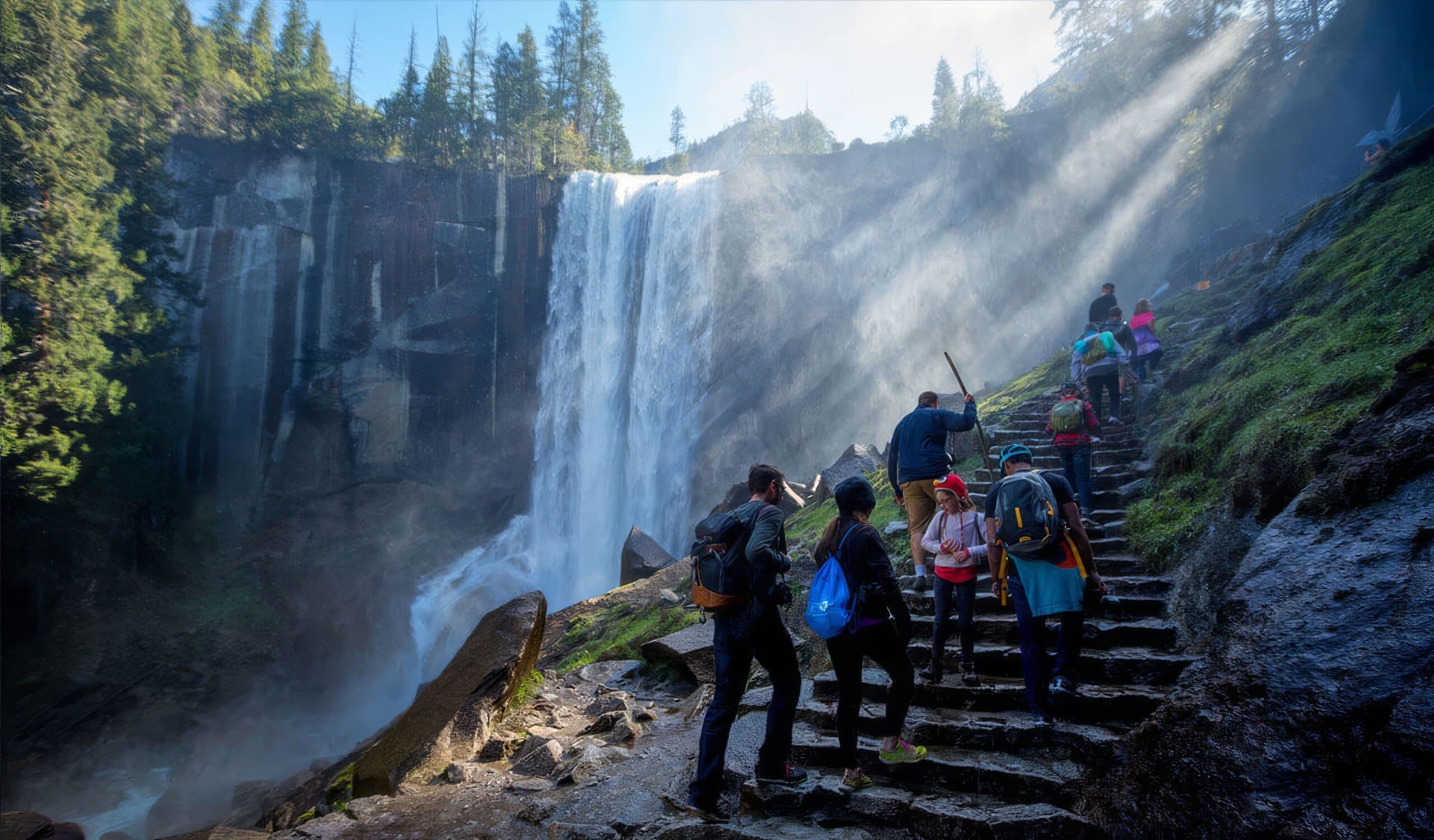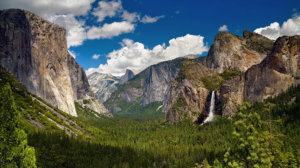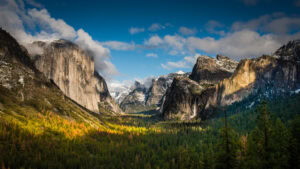Yosemite National Park is home to magnificent granite cliffs, extraordinary wildlife and bright beds of lively wildflowers””but what really drives visitors to make their way to Yosemite? The chance to see one of Yosemite’s famous waterfalls.
Yosemite waterfalls are some of the largest in North America and a hike to the top results in stunning views many have only dreamt about. Yosemite’s waterfalls reach peak flow during late spring, specifically April and May when most of the high-country snowmelt occurs. Each waterfall in Yosemite has an approximate peak flow season and some of them are ephemeral, or flow year-round.
While hiking to waterfalls in Yosemite is quite popular, many waterfalls can be accessed without undertaking a steep, all-day hike. Views of both Yosemite Falls and Bridalveil Fall can be grabbed from the Yosemite Valley floor, Sentinel Meadow and Cooks Meadow Loop via a series of boardwalks that have no elevation gain, too. Whether you’re in the mood for a leisurely jaunt or looking for more of a challenge, there will be an unforgettable view of one of the many waterfalls in Yosemite to fit your hiking level.
Yosemite Falls, Sentinel Fall & Horsetail Fall
Yosemite Falls, Sentinel Fall and Horsetail Fall are some of the tallest and most popular waterfalls in Yosemite.
Yosemite Falls, the world’s fifth tallest waterfall, is actually made up of three separate falls: Upper Yosemite Fall at 1,430 feet, the middle cascades at 675 feet, and Lower Yosemite Fall at 320 feet. Lower Yosemite Falls trail is an easy hike, but many visitors can’t stop themselves from trekking to Upper Yosemite Falls, which is 2,425 feet tall and ranked as the highest waterfall in North America. Hiking Upper Yosemite Falls is like hiking the Empire State Building””twice. The hike is pretty demanding with quite a few switchbacks, so don’t forget sunscreen and bring plenty of water. We promise the views are worth it. Check out the Yosemite Falls webcam for a current view of the falls!
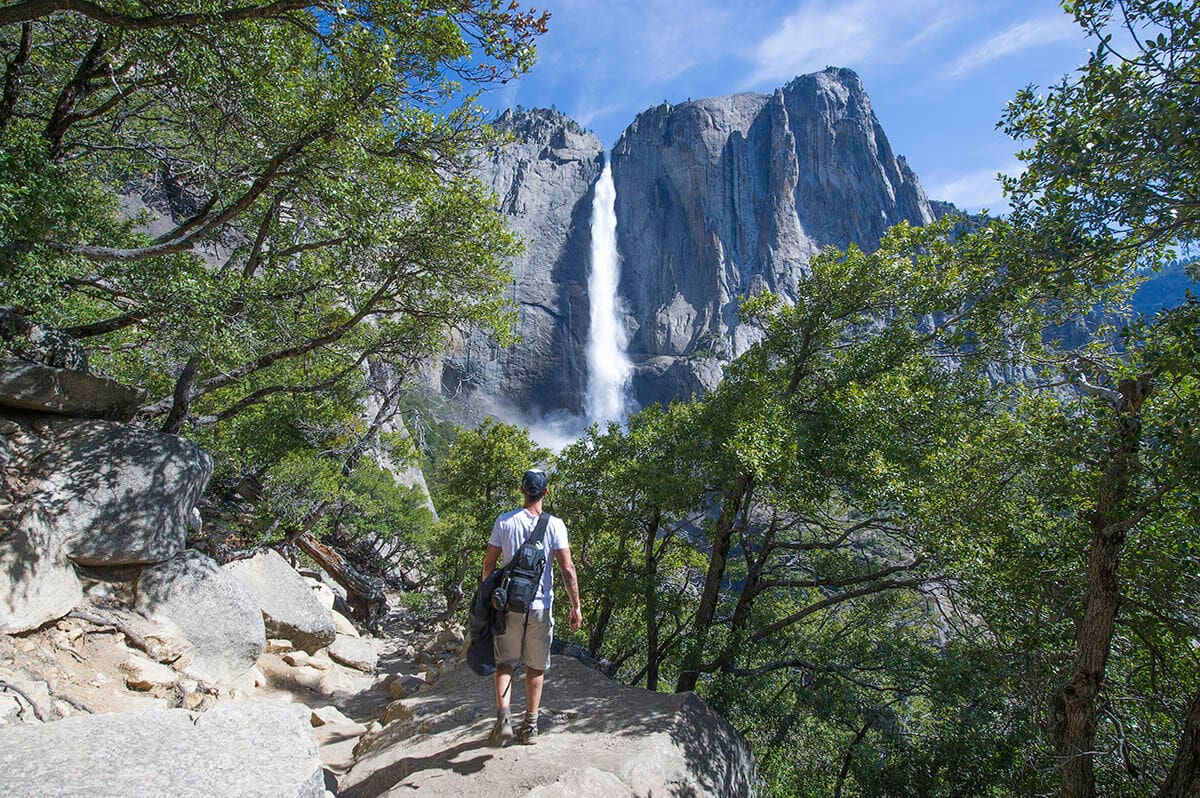
While Yosemite Falls is the tallest, Sentinel Fall is a close second at about 2,000 feet and usually flows from March through June, with a peak flow in May. Located in the south side of Yosemite Valley, this Yosemite waterfall is comprised of multiple cascading pieces that range anywhere from 50 – 500 feet in height. You can see Sentinel Fall from across Yosemite Valley near Leidig Meadow, or more clearly from Southside Drive near Sentinel Beach Picnic Area.
Horsetail Fall is a small ephemeral waterfall with a spectacular location – off the shoulder of the great El Capitan. Because of its ephemeral nature, it’s often not flowing during the summer months when most people come to visit. However, the thing that makes this waterfall special is a magical confluence of light and water in mid- to late February that makes Horsetail Fall glow a deep molten orange, filled with the light of the setting sun. More commonly dubbed the natural Yosemite firefall (not to be confused with the Glacier Point Firefall which ended in 1973), this humble waterfall becomes an international celebrity in its own right.
If you’re visiting Yosemite National Park in late summer and still want to catch a glimpse of a Yosemite waterfall that is lesser known, check out Chilnualna Falls for a full-day hike to a year-round, steady flowing fall in the southern region of the park. Chilnualna Fall is located in Wawona and cannot be seen from the road. A dirt parking area in the small community of Wawona is the place to park for this hike – please drive slowly and safely.
If you’re in the northern part of Yosemite National Park, you’re bound to find some roaring falls at Hetch Hetchy Reservoir. John Muir once described the beauty of the Hetch Hetchy area as more beautiful than all of Yosemite Valley. The region was a valley prior to the construction of the O’Shaughnessy Dam, and John Muir often wrote about the valley and its offerings in his travels. The trail leading around the Hetch Hetchy Reservoir is flat and eventually leads to Wapama Fall. From there, you can continue to the cascades at Rancheria Flat.
Yosemite Waterfall Hikes
If you’re looking for Yosemite waterfall hikes, try Bridalveil Fall (the Parking area and trail are closed for 2021 due to construction), mentioned above. Bridalveil Fall is an easy Yosemite waterfall hike that offers paved trails which are wheelchair accessible and perfect for leashed pets. Located off State Highway 41 on Southside Drive, Bridalveil Fall is about 620 feet tall and flows all year long, with peak flow in May like most Yosemite waterfalls.
One of Yosemite National Park’s most popular waterfall hikes begins at Glacier Point. Take the tour bus from Yosemite Valley Lodge to the Panorama Trail and hike down for about two miles. Here, you will find Illilouette Falls. (Note: Glacier Point Road is closed for 2021 due to construction.)
Illilouette Falls flows year-round and is only visible from the Panorama Trail. This trail will also lead you to both Nevada Fall and Vernal Fall. Here you can climb the granite steps to witness the Merced River plunge off two colossal drops. If you continue on this trail past Nevada Fall, you will eventually reach Half Dome. Many people assume the granite dome to the left of Nevada Fall is Half Dome, but it’s actually Liberty Cap. If you’re planning to hike the Half Dome Trail, don’t forget that you need a permit. Permits are given out on a lottery basis and capped at 300 hikers per day. Daily lottery applications are accepted from 12:01 AM PST to 1:00 PM PST two days in advance of the intended hiking date, so you’ll need to plan accordingly.
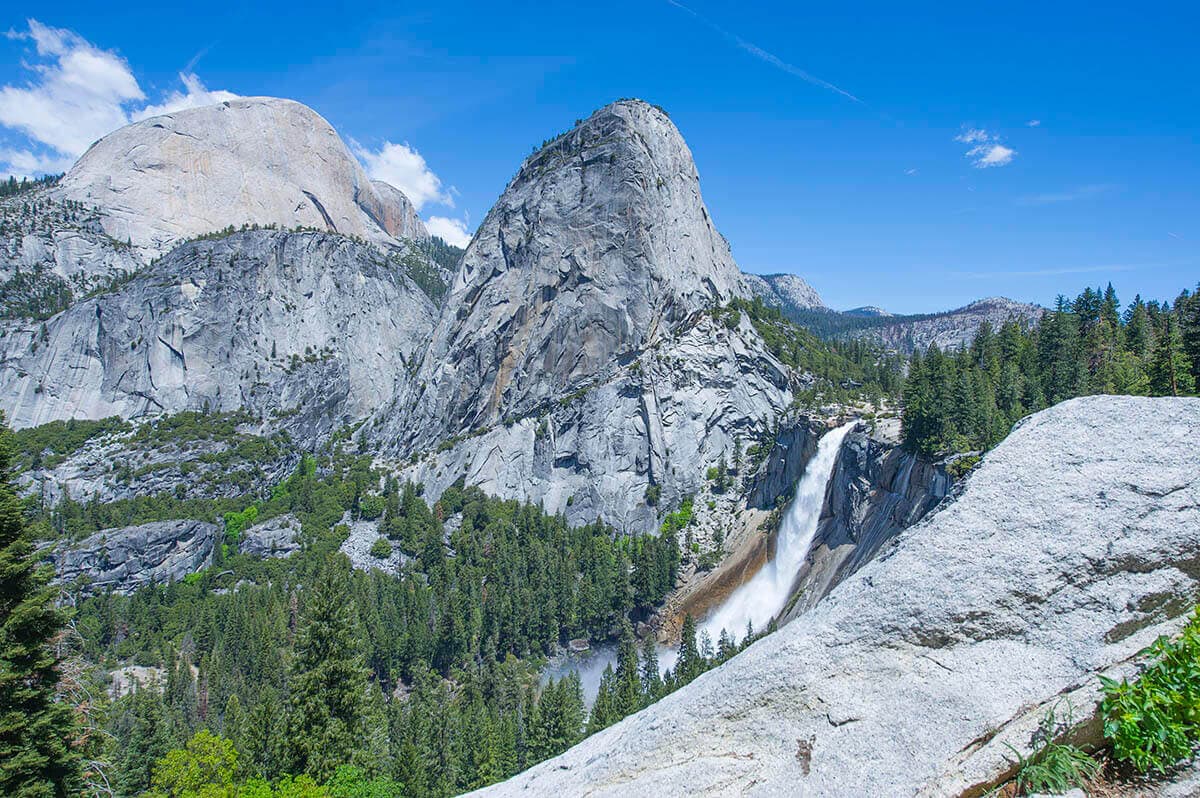
Tips for Staying Safe on Yosemite Waterfall Hikes
When visiting Yosemite National Park, it is important to remember that many visitors will want to see the same iconic Yosemite waterfalls you do. To reach the best views, it will take some work, as hikes to waterfalls such as Yosemite Falls are steeper and can take most of the day.
Enjoying Yosemite National Park waterfalls is a favorite activity among travelers and hikers from all over the world but staying safe in the park is a priority.
If you are planning to visit Yosemite National Park during the peak season for waterfalls, which is by far early spring, remember to pack appropriately. Always bring extra water, food and an extra pair of socks. Make sure that your hiking boots are good and worn in and you’ve packed a raincoat. Because we’re not kidding when we say the waterfalls will be roaring. Always remain on trail while hiking anywhere in Yosemite and obey signs that note closed areas, they’re closed to keep you safe. Also, never scramble on rocks near waterfalls, wet granite is extremely slippery and a simple slip could cost you a trip to the emergency room – or worse.
Yosemite waterfall hikes range anywhere from easy to difficult, and there are several handicap accessible trails as well, so no matter what level of hiker you are, you will be able to reach at least one waterfall when you visit the park. Just make sure to do your research on the hike and its difficulty, review the rules of the trail and remember to waterproof your camera!

